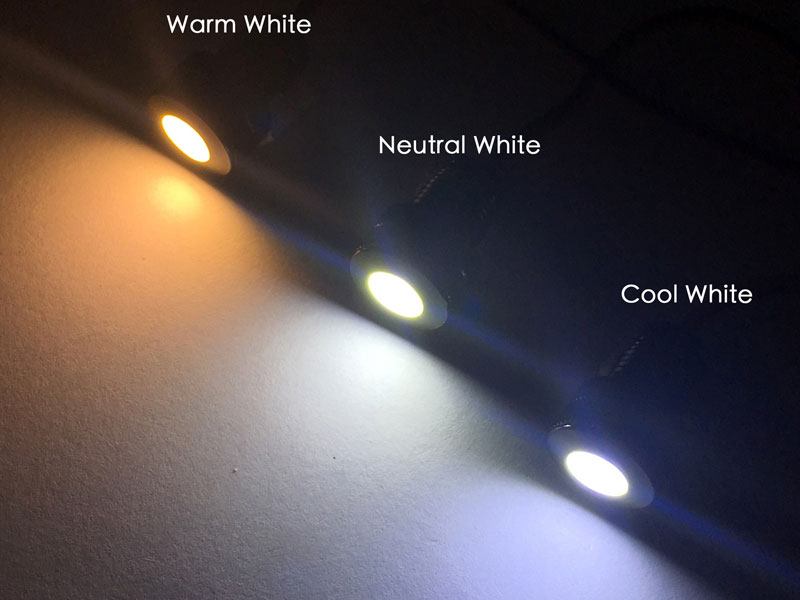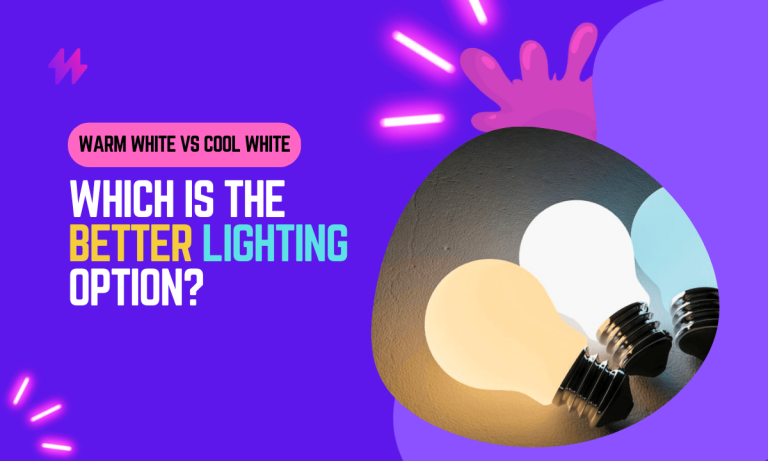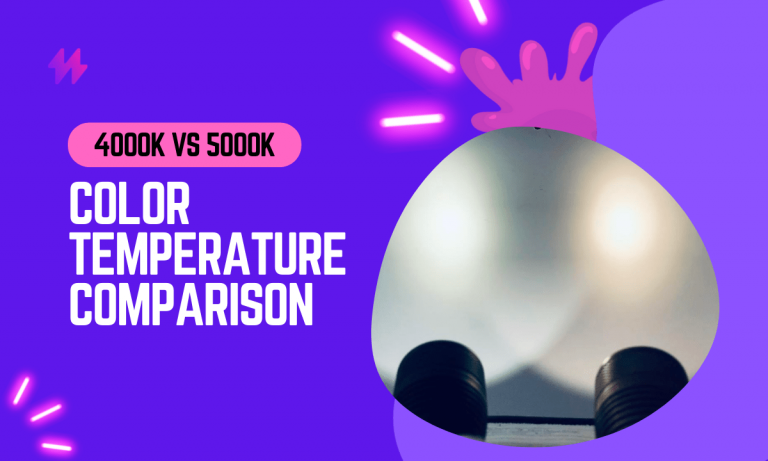Cool White vs Neutral White: Choosing the Right White Light Color

Have you ever walked into a room and felt like the lighting was just off, but couldn’t quite put your finger on why? The color of the light can make a huge difference in the ambiance and functionality of a space.
As a new homeowner, or someone looking to update your current home, understanding the difference between cool white and neutral white light can help you create a space that is both functional and inviting.
In this blog, we will break down the main differences between cool white and neutral white light, and help you choose the right white light color for your home.
Whether you’re looking to create a warm and cozy atmosphere in your living room or a bright and energizing environment in your home office, we’ve got you covered.
Cool White vs Neutral White – What’s The Difference?
Cool white light has a bluish tint and is characterized by its high color temperature (usually measured in Kelvins), it is often used in outdoor and industrial settings. It mimics the bright, cool light of the sun.
On the other hand, Neutral white light has a slight yellow tint and is characterized by its lower color temperature, this creates a warm and cozy ambiance.
Also read: Difference between Bright White vs Daylight Lighting
Cool White Light
Cool white light has a bluish tint and is often used in outdoor and industrial settings. It is characterized by its high color temperature. The higher the color temperature, the cooler and bluish the light appears.
Cool white light is great for tasks that require high levels of concentration and alertness. It’s also great for outdoor areas.
Some of the benefits of cool white light are that it provides greater visibility, reduces eye strain, and makes spaces feel larger and more open.
It’s important to note that cool white light can be harsh and cause glare(learn how to reduce light glare), especially if not properly diffused or directed.
Neutral White Light
Neutral white light has a slight yellow tint and is commonly used in homes and offices to create a warm and inviting atmosphere. It is characterized by its lower color temperature. The lower the color temperature, the warmer and the more yellow the light appears.
Neutral white light can be beneficial in creating a soothing and comfortable environment, it can also make a space feel more cozy, intimate, and relaxing.
When compared to cool white light, neutral white light is less harsh and more pleasant on the eyes, making it more suitable for spaces where people tend to spend more time.
Additionally, too much warm light can make skin tones appear yellowish, so it’s important to use it in combination with other light sources to achieve a balance.
Must read: Difference between 5000K & 6500K color temperature
Where to Use Cool White Color Temperature?
In terms of home use, cool white light is best for spaces such as home offices, where you need a lot of light to work efficiently, and bathrooms, where a bright light is needed for grooming and makeup application.
It’s often used in places like warehouses, garages, and gyms.
Where to Use Neutral White Color Temperature?
Neutral white light is best for spaces such as living rooms, bedrooms, and dining rooms, where a warm and cozy ambiance is desired.
It’s also commonly used in restaurants and other hospitality settings to create a welcoming and inviting atmosphere.
Where do Cool White and Neutral White Comes On the Color Temperature Scale?

Cool white light is characterized by its high color temperature, usually measured in Kelvins (K). The color temperature range for cool white light is typically between 4000K-6000K.
On the other hand, neutral white light is characterized by its lower color temperature, usually in the range of 2700K-3000K.
This means that cool white light is bluer and more “cool” than neutral white light which is warmer and more “neutral”.
So, cool white light sits on the higher end of the Kelvin color temperature scale and Neutral white light sits on the lower end of the scale.
Choosing the Right White Light Color
There are various factors one needs to consider while choosing the white light color.
1. Purpose
Different spaces have different lighting needs. Think about the activities that will be taking place in the space and choose a light color that will enhance those activities.
For example, cool white light may be better suited for a place where you need a lot of light to work efficiently, while neutral white light may be better suited for a living room where you want to create a warm and inviting atmosphere.
2. Personal preference:
The choice of light color also depends on personal preference. Some people may prefer a cooler light for reading and working, while others may prefer a warmer light for relaxing and unwinding.
3. Natural light:
Consider the amount of natural light that the space receives. If a space gets a lot of natural light, then a cooler light may be a better choice to balance out the warmth from the sun.
On the other hand, if the space gets very little natural light, a warmer light may be a better choice to create a comfortable and inviting atmosphere.
4. Lighting fixtures
The type of fixtures you choose to use can also affect the final light color. Some fixtures produce a more yellow or bluish light than others, so it’s important to consider the type of fixtures you’re using when choosing a light color.
Testing Is Always the Best

As the differences between cool white vs neutral white are subtle. And, the white light color temperature can have an impact on your overall lighting design. You can try various combinations of lights or you can use adjustable lighting.
Combination of lights
Instead of choosing between cool white or neutral white, you can also consider a combination of both to achieve a balance.
For example, using cool white light for task lighting and neutral white light for ambient lighting.
Adjustable lighting
it’s important to have adjustable lighting options in your space so you can change the light color depending on the time of day or the activity taking place. You can use a dimmer switch, or even smart lighting technology, to adjust the light color throughout the day to align with natural light cycles.
Conclusion
In conclusion, the choice between cool white and neutral white lighting hinges on both the functional requirements and the aesthetic preferences of the space in question. Cool white light, typically ranging from 5000K to 6500K, emits a more intense, vibrant light that resembles daylight. This quality of light is particularly beneficial in environments that require clear visibility and high levels of concentration, such as in office settings, garages, or kitchens where tasks are performed. The crisp, invigorating nature of cool white light can help to enhance mental alertness and improve overall productivity, making it a preferred choice for areas where detail-oriented work takes place.
On the other hand, neutral white light, with color temperatures typically around 4000K, offers a balance between the warm and cool spectrums. This balance provides a light that is bright enough to support productivity, yet soft enough to keep a space welcoming and visually comfortable, making it ideal for retail spaces, workspaces, and homes. The versatility of neutral white light allows it to seamlessly integrate into almost any decor style, supporting an array of design aesthetics without skewing color perceptions, which can often occur under the starkness of cool white lighting. Ultimately, the decision between cool white and neutral white should be guided by considering how the light affects the mood of a space, the tasks performed within it, and how it complements the overall design scheme. By carefully selecting the appropriate white light color, one can create a desired atmosphere that enhances both the functionality and the aesthetic appeal of their environment.






